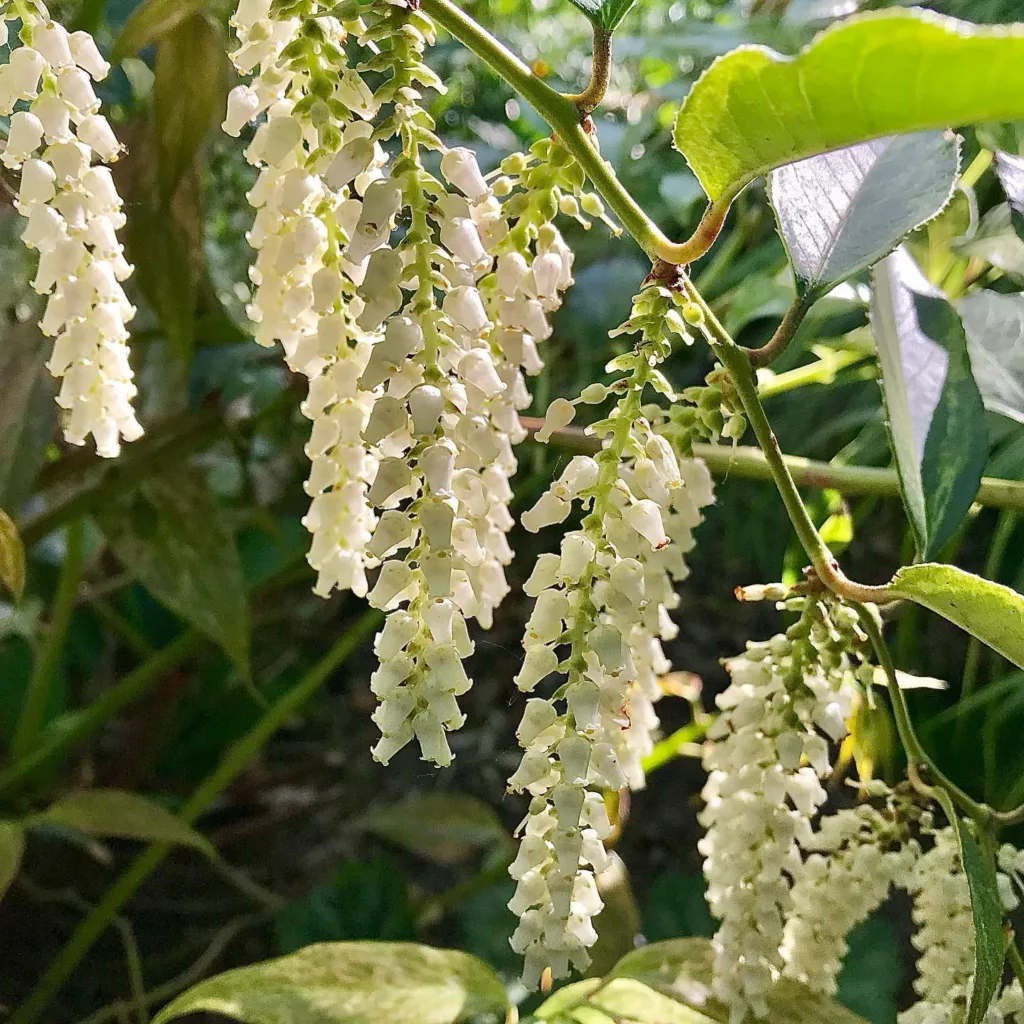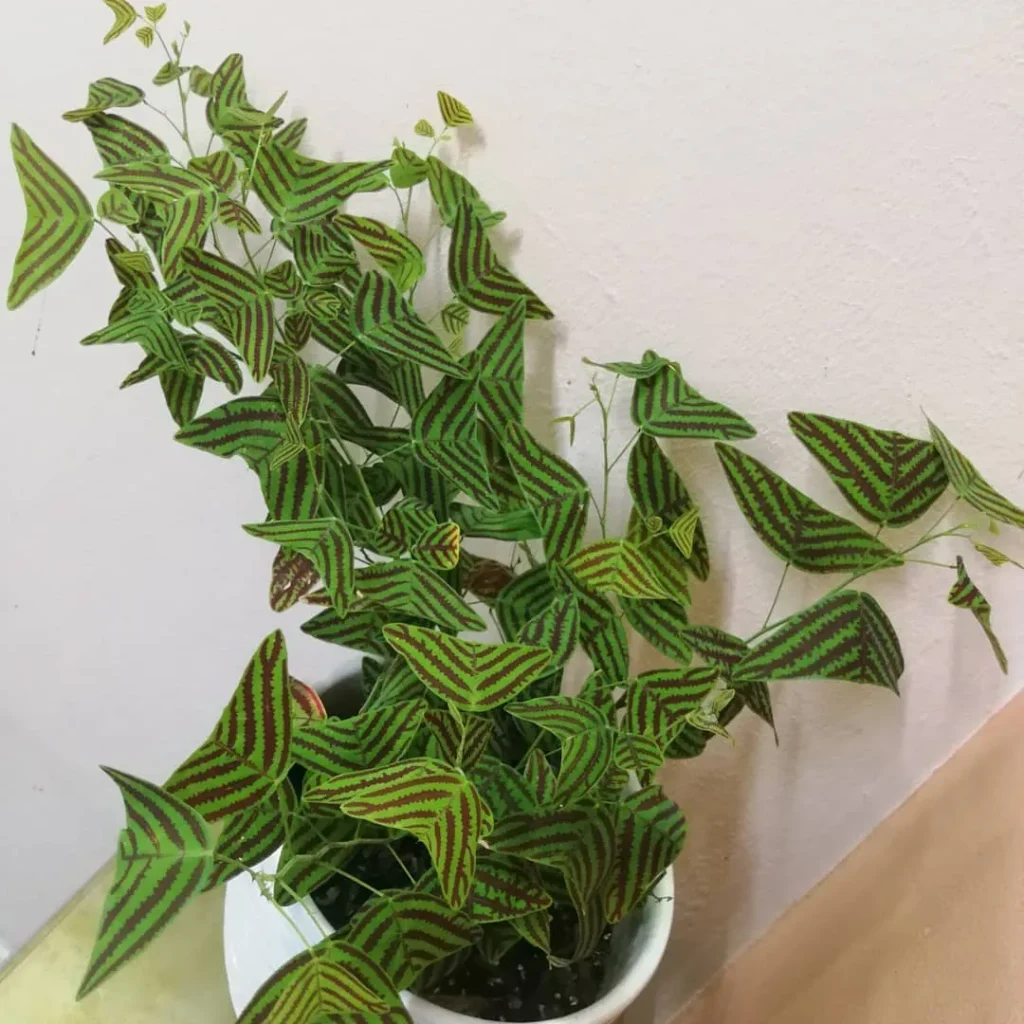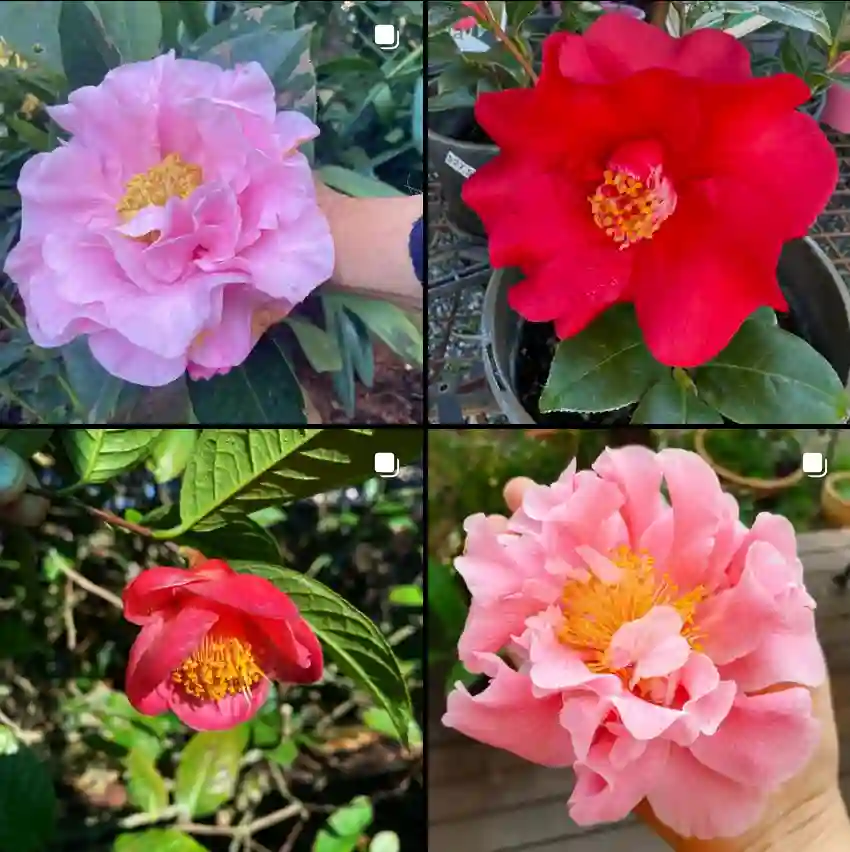Begonia ferox, commonly known as the “Troll Begonia” or “Fierce Begonia,” is a truly unique and captivating rhizomatous Begonia species that stands out dramatically in any plant collection. Native to the limestone regions of Guangxi, southern China, this rare begonia is renowned for its extraordinarily textured leaves, which are covered in pronounced, dark, conical bumps called bullae. These bullae, especially when mature, give the glossy green leaves a prehistoric, almost spiky appearance, earning it its “fierce” moniker. Despite its formidable look, Begonia ferox is a rewarding challenge for experienced plant enthusiasts who can provide the precise, high-humidity conditions it requires.
Unveiling the Fierce Charm: Characteristics of Begonia Ferox
Begonia ferox is prized primarily for its unique foliage rather than its subtle, small white flowers. Its slow development of bullae on new leaves means observing its transformation is part of its charm.
Key Characteristics of Begonia Ferox:
- Distinctive Bullated Foliage: The most prominent feature is its glossy, asymmetrical green leaves adorned with numerous raised, conical, dark (often black) bumps called bullae. These bullae are initially flat on young leaves and gradually develop as the leaf matures.
- Textural Contrast: The bullae create an incredibly rugged, almost prehistoric texture that contrasts with the smooth, glossy surface of the leaf itself. Each cone may initially have a fine hair (trichome) at its tip, which typically falls off as the leaf matures.
- Rhizomatous Growth: It is a rhizomatous Begonia, meaning it grows from a thick, creeping underground stem (rhizome) that spreads horizontally. It maintains a relatively compact size, typically reaching 12−18 inches (30−45 cm) in height.
- Subtle Flowers: It produces small, white flowers, which are generally inconspicuous and not the main ornamental draw of the plant.
- Origin: Endemic to the Guangxi region of southern China, where it grows on limestone rocks, often in humid, shaded forest environments with abundant leaf litter.
- Resemblance to B. melanobullata:Begonia ferox is often confused with Begonia melanobullata due to their similar bullated leaves. However, key distinctions include:
- Young leaves of B. ferox do not initially have bullae, unlike B. melanobullata.
- Mature leaves of B. melanobullata are generally rounder and larger, and retain the trichome at the tip of their bullae, whereas B. ferox loses them.
Comprehensive Care Guide for Begonia Ferox
Successfully cultivating Begonia ferox requires meticulous attention to its environmental conditions, making it more suitable for advanced plant keepers or those with controlled growing environments like terrariums or plant cabinets.
1. Light Requirements
- Bright, Indirect Light to Semi-Shade: Begonia ferox thrives in bright, indirect sunlight or semi-shade. This mimics its natural habitat under a forest canopy where light is filtered.
- Avoid Direct Sunlight: Direct, harsh sunlight, especially intense midday and afternoon sun, will easily scorch its delicate leaves, causing irreversible damage and dulling its vibrant green color. East or north-facing windows are ideal indoors. If using a south or west-facing window, always use sheer curtains to diffuse the light significantly.
- Low Light Conditions: While it can tolerate medium light, inadequate light can lead to leggy growth and less vigorous development. Rotate the pot periodically to ensure even light exposure on all sides.
2. Watering
- Consistently Moist, Never Soggy: This is a delicate balance. Begonia ferox requires its substrate to be consistently moist but absolutely never waterlogged. It is highly susceptible to root rot, which is a common cause of failure for this species.
- Allow Top Layer to Dry Slightly: Allow the top 1−2 inches (2.5−5 cm) of the soil to dry out before watering again. This usually translates to watering every 3-4 days in an average home environment, but frequency will vary with humidity, temperature, and light.
- Thorough Soaking and Drainage: When watering, do so thoroughly until water drains from the bottom of the pot. Always use pots with excellent drainage holes, and promptly empty any excess water from saucers to prevent the plant from sitting in standing water.
- Avoid Wetting Foliage: It is crucial to water at the base of the plant and avoid getting water on the leaves. Water sitting on the unique textured foliage can easily lead to bacterial leaf spots, browning, or fungal issues like powdery mildew or gray mold (Botrytis blight), to which Begonias are generally susceptible.
3. Soil and Potting
- Very Loose, Aerated, and Well-Draining Substrate: Begonia ferox demands a highly specialized, airy, and very well-draining substrate that is rich in organic matter but resists compaction. Its natural habitat on limestone rocks suggests a preference for very loose, well-aerated media.
- Recommended Mix: A good mix typically includes components like high-quality sphagnum moss, perlite, orchid bark, pumice, coco coir, and possibly some horticultural charcoal. A soil mix designed for Aroids or other moisture-retentive but fast-draining tropicals can be adapted. Some growers use a mix optimized for Begonia species from limestone soils.
- pH Preference: While specific pH isn’t widely documented, its limestone origin might suggest a tolerance for slightly alkaline conditions, though most Begonias prefer slightly acidic to neutral.
- Pot Selection: As a rhizomatous Begonia that grows horizontally rather than plunging downward with roots, ‘Ferox’ often does best in shallow, wider pots. This helps prevent the lower soil from staying soggy and allows the rhizome to spread naturally. Ensure the pot has ample drainage holes.
4. Temperature & Humidity
- Consistent Warm Temperatures: Begonia ferox thrives in consistent warm temperatures, ideally between 68∘F and 77∘F (20∘C to 25∘C). It is highly sensitive to cold and should never be exposed to temperatures below 50∘F (10∘C), as this can cause rapid decline or death.
- Avoid Fluctuations and Drafts: Protect the plant from sudden temperature fluctuations and cold drafts from windows, doors, or air conditioning vents, as consistency is key for its delicate nature. A slight nighttime temperature drop of about 5∘C (9∘F) can promote healthy growth.
- Extremely High Humidity is Essential: This is arguably the most critical factor for successful cultivation. Begonia ferox requires very high humidity levels, ideally between 70% and 90%. Lower humidity can lead to dry, crunchy, or browning leaf edges.
- Best Environment: It is highly recommended to grow this plant in a closed terrarium, greenhouse, or plant cabinet where consistently high humidity can be maintained without constant misting. Normal household humidity is usually insufficient.
- Airflow: Despite the need for high humidity, good, gentle air circulation is vital to prevent stagnant air, which can lead to fungal infections. Ensure adequate ventilation even in enclosed environments.
5. Fertilization
- Moderate Feeding During Growing Season: Fertilize Begonia ferox moderately during its active growing season (spring and summer) to support its foliage development.
- Recommended Regimen: Use a balanced, water-soluble liquid fertilizer, diluted to a very weak solution (e.g., quarter strength or less). Apply once or twice a month. Avoid high concentrations to protect sensitive leaves.
- Reduce in Dormancy: Reduce or cease fertilization entirely during the winter months when the plant’s growth naturally slows down. Over-fertilization can lead to salt buildup in the sensitive substrate and potentially burn the leaves.
6. Pruning and Maintenance
- Minimal Pruning: Begonia ferox generally requires minimal pruning.
- Maintain Tidiness: Promptly remove any dead, dying, or yellowing leaves to maintain plant health and appearance. This is crucial for preventing fungal issues, especially in high-humidity environments.
- Sterile Tools: Always use clean, sharp, sterilized tools for any pruning to prevent the introduction and spread of pathogens.
- Observe Bullae Development: As the plant matures, its iconic bullae will develop more slowly, offering a rewarding experience of watching its gradual transformation.
Propagation: Multiplying the Troll Begonia
Begonia ferox, being a rhizomatous Begonia, can be easily propagated from leaf cuttings or stem cuttings. It is known to propagate quite readily, even from immature leaves without developed bullae.
- Leaf Cuttings (Highly Effective):
- Select Leaves: Choose a healthy, mature leaf from the parent plant.
- Preparation: You can insert the entire petiole (leaf stem) into a moist, well-draining rooting medium (e.g., perlite, sphagnum moss, or a light potting mix). Alternatively, cut the leaf into sections, ensuring each section contains a piece of a main vein on the underside, and lay these flat on the surface of the moist rooting medium, gently pinning them down for good contact.
- Environment: Crucially, provide very high humidity (e.g., within a sealed plastic bag, clear dome, or terrarium) and warm, bright, indirect light.
- Rooting: New plantlets will emerge from the base of the petiole or along the veins of the leaf sections within several weeks.
- Stem Cuttings:
- Select Cuttings: Take healthy stem sections with at least one node.
- Rooting: Place the cutting directly into a moist, well-draining rooting medium (e.g., sphagnum moss or a specialized Begonia mix).
- Environment: Maintain very high humidity and warm, bright, indirect light. Roots typically develop within a few weeks.
- Rhizome Division:
- Method: During repotting, or if the plant becomes overcrowded, carefully separate sections of the rhizome, ensuring each section has at least one healthy growth point.
- Planting: Plant the divided rhizomes shallowly in fresh, well-draining substrate.
- Environment: Provide similar warm, humid, indirect light conditions as for cuttings.
Common Pests and Diseases
Begonia ferox is often described as a “tough begonia” due to its resilience, but its specific needs also make it susceptible to problems if conditions are not met.
- Pests:
- Mealybugs, Spider Mites, Aphids, Thrips: Regularly inspect the plant, especially the undersides of leaves and in crevices, as pests can thrive in high-humidity environments. Treat with appropriate, gentle insecticides like neem oil or insecticidal soap, testing on a small area first.
- Vine Weevil: Can be an issue, particularly for outdoor plants, as larvae feed on roots.
- Diseases:
- Root Rot / Crown Rot: The most prevalent and serious issue, almost always due to overwatering or poorly draining substrate. Leads to mushy stems and plant collapse. Begonia ferox is highly sensitive to overly wet conditions in its substrate, even with high ambient humidity.
- Powdery Mildew: White, powdery spots on leaves and stems. Favored by high humidity with poor air circulation and cool temperatures. Improve airflow, avoid overhead watering.
- Botrytis Blight (Gray Mold): Fuzzy gray or brownish patches, often appearing on decaying plant matter or in damp, cool, crowded conditions. Remove affected parts immediately and improve ventilation.
- Bacterial Leaf Spot: Dark, water-soaked spots on leaves, often due to water sitting on foliage. Avoid overhead watering.
- Leaf Browning/Crisping: Often a sign of insufficient humidity or fluctuations in environmental conditions, rather than a pathogen.
Prevention is Key: Maintaining extremely consistent and optimal environmental conditions (high humidity, stable temperature, gentle airflow, precise watering) is the best defense. Immediate isolation and treatment are vital at the first sign of any issue.
Design Ideas and Display for Begonia Ferox
The unique, prehistoric appearance of Begonia ferox makes it a fascinating focal point for specialized plant displays.
- Terrariums and Vivariums: This is the most recommended environment. A closed terrarium provides the stable, high humidity and controlled conditions that Begonia ferox absolutely requires, allowing its unique foliage to thrive.
- Plant Cabinets/Ikea Greenhouse Cabinets: These offer the perfect microclimate for rare and sensitive Begonias, providing precise control over humidity, temperature, and light, allowing for stunning displays.
- Display Boxes/Cloches: Smaller specimens can be grown in decorative glass cloches or bell jars on a shelf, creating a living work of art that protects them from ambient household conditions.
- Collector’s Specimen: Best displayed as a standalone piece or with very few, complementary plants where its unique texture and form can be admired up close.
- Pairing: Within a terrarium, it can be paired with other small, high-humidity-loving plants that provide textural contrast, such as fine-leafed ferns, mosses, or other rare miniature Aroids.
Begonia Ferox vs. Other Popular Begonia Types
Understanding where Begonia ferox fits within the diverse Begonia genus highlights its unique attributes, especially its specialized foliage and care requirements.
- Begonia Ferox (Rhizomatous):
- Key Differentiator: Glossy green leaves with prominent, dark, conical bullae (spikes); high humidity requirement; rhizomatous.
- Foliage: Unique, textured, almost prehistoric appearance. Bullae develop with maturity.
- Flowers: Small, white, inconspicuous.
- Growth Habit: Compact, grows from creeping rhizomes.
- Light: Bright, indirect light to semi-shade.
- Humidity: Very high (70-90%) is crucial.
- Primary Use: Advanced collector’s plant for terrariums/plant cabinets, unique foliage specimen.
- Begonia melanobullata (Rhizomatous):
- Key Differentiator: Similar bullated leaves to B. ferox, but bullae on young leaves; adult leaves rounder and larger; retains trichomes on bullae.
- Foliage: Also has bullated leaves, often with dark, almost black bullae.
- Light/Care: Similar high humidity needs to B. ferox.
- Distinction: Often confused with B. ferox but distinguished by bullae presence on young leaves and retention of trichomes.
- Begonia ‘Darthvaderiana x malachosticta’ Hybrid (Rhizomatous):
- Key Differentiator: Very dark/near-black leaves with green/yellowish spots and a distinct green margin; deep red undersides; extremely high humidity.
- Foliage: Dramatic color contrast, unique spotting.
- Light: Bright, indirect to semi-shade; sensitive to direct sun.
- Humidity: Extremely high (80-100%) crucial.
- Primary Use: Advanced collector’s plant for terrariums/plant cabinets.
- Begonia U514 (Unidentified Rhizomatous Species):
- Key Differentiator: Foliage plant with bronze new growth transforming to dark green, reddish-purple undersides; rhizomatous.
- Light: Bright, indirect light.
- Humidity: Medium to high (50-60%) preferred.
- Care: Requires soil to dry relatively between waterings.
- Distinction: Lacks the prominent bullae and extreme dark coloration of B. ferox.
- Rex Begonias ( Begonia rex-cultorum – Rhizomatous):
- Key Differentiator: Grown for highly ornamental, often metallic, variegated, intricately patterned foliage; wide range of non-iridescent colors; typically larger and more diverse patterns than species Begonias.
- Foliage: Highly ornamental, diverse patterns, textures, and colors.
- Flowers: Small, inconspicuous.
- Light: Bright, indirect light.
- Humidity: Prefer high humidity to prevent crispy leaf edges.
- Primary Use: Houseplants for decorative foliage, terrariums.
Toxicity of Begonias
Important Note: All Begonias, including Begonia ferox, contain insoluble calcium oxalates, making them toxic to pets (dogs and cats) if ingested. The highest concentration of these toxic compounds is generally found in the rhizomes/roots. Ingestion can lead to:
- Intense burning and irritation of the mouth, tongue, and throat.
- Excessive drooling.
- Vomiting.
- Difficulty swallowing.
- Lack of appetite.
While usually not life-threatening due to the immediate discomfort that deters further ingestion, it’s crucial to keep these plants out of reach of curious pets and small children. In rare, large ingestions, more severe symptoms like kidney failure have been reported. For humans, the toxicity is generally considered mild, but ingestion of any plant material is not recommended. Always contact a veterinarian immediately if you suspect your pet has ingested any part of the plant.
Conclusion
Begonia ferox is a truly extraordinary and visually stunning Begonia species, offering a captivating blend of prehistoric texture and vibrant green foliage. While it presents a delightful challenge for growers due to its specific demands for high humidity and careful watering, the reward is an unparalleled ornamental display. For those who can provide the precise, consistent conditions it craves, particularly within a terrarium or plant cabinet, Begonia ferox transforms into a living sculpture, becoming a prized centerpiece in any specialized plant collection. Embrace the fierce charm of this unique begonia and let it add a touch of the wild, untamed beauty of Borneo to your indoor oasis.
If i die, water my plants!



